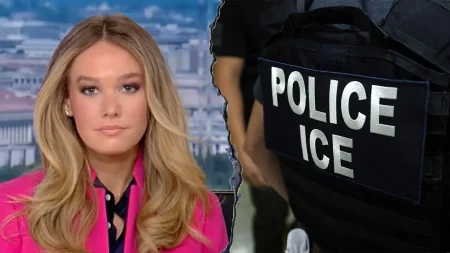The House of Representatives is grappling with a potential government shutdown as a bipartisan deal to extend funding falters amidst conservative backlash. House Speaker Mike Johnson’s initial proposal, a continuing resolution (CR) to fund the government through March 14th, included disaster relief, agricultural subsidies, healthcare reforms, and provisions for RFK Stadium revitalization. This comprehensive approach, while seemingly addressing various urgent needs, triggered significant opposition from the right wing of the Republican party, including members of the House Freedom Caucus, and garnered criticism from President-elect Trump and his transition team, including Elon Musk. The dissenters viewed the bill as bloated with extraneous provisions and expressed concern about the increased spending. The initial deal’s collapse has forced Republican leadership into hurried negotiations to devise an alternative plan before the Friday deadline. The situation highlights the precarious balance of power within the House and the difficulty of navigating bipartisan cooperation in a deeply divided political landscape.
The controversy surrounding the CR stems from several key points of contention. Conservatives criticized the inclusion of policy riders unrelated to essential government functions, arguing for a more streamlined approach focused solely on funding vital operations. The $100 billion allocated for disaster relief, while aimed at aiding communities impacted by Hurricanes Milton and Helene, became a target for criticism due to its high price tag. Similarly, the $10 billion earmarked for agricultural subsidies was deemed excessive by fiscal conservatives. The addition of healthcare reform measures further fueled the opposition, as these provisions were seen as unrelated to the immediate need to avoid a government shutdown. These concerns, combined with the overall size and scope of the bill, coalesced into a powerful wave of resistance that ultimately derailed the initial bipartisan agreement.
External pressure from President-elect Trump and his associates further complicated the situation. Trump and Vice President-elect JD Vance issued a joint statement opposing the initial CR and advocating for a different strategy that linked the CR to an increase in the debt ceiling. They argued that addressing the debt ceiling now, while under a Democratic administration, would be strategically advantageous. This stance put further pressure on House Republicans, many of whom are hesitant to raise the debt ceiling without significant spending cuts. Elon Musk’s vocal criticism on social media amplified the opposition and added another layer of complexity to the already fraught negotiations. His call for voters to oust representatives who supported the initial deal added a populist element to the debate, underscoring the growing influence of social media in shaping political discourse.
The collapse of the initial deal has left House Republicans scrambling to find a viable alternative. Discussions are now focused on a “skinny” CR that would strip away the additional provisions and concentrate solely on essential government funding. This approach is an attempt to appease conservative critics while still averting a shutdown. However, it remains unclear whether this streamlined approach will garner sufficient support from both Republicans and Democrats. Democrats have expressed concerns about reneging on the initial bipartisan agreement and have warned Republicans against solely catering to their right flank. House Minority Leader Hakeem Jeffries emphasized the potential political consequences for Republicans if they fail to uphold the initial agreement and trigger a government shutdown.
The challenge for Speaker Johnson is to find a path forward that can unite his fractured caucus while also securing enough Democratic votes to pass a CR. The slim Republican majority in the House makes bipartisan cooperation essential, but the deep partisan divide makes such cooperation increasingly difficult. Johnson faces the dilemma of either bowing to the demands of his conservative wing and risking a government shutdown or alienating his base and potentially jeopardizing his speakership. This delicate balancing act underscores the precarious nature of governing in a highly polarized political environment. The impending deadline adds further pressure, leaving little time for extensive negotiations and compromise.
The looming government shutdown has significant implications for the American public. A shutdown would disrupt essential government services, impacting everything from national parks to federal agencies. Federal employees would face furloughs, and the ripple effects would be felt throughout the economy. The political fallout could also be substantial, with both parties facing public scrutiny and potential blame for the disruption. The ongoing negotiations in the House of Representatives will determine whether a government shutdown can be averted and what the ultimate cost of political compromise will be. The outcome will have far-reaching consequences for the remainder of the fiscal year and could set the stage for future budget battles in the coming months.















